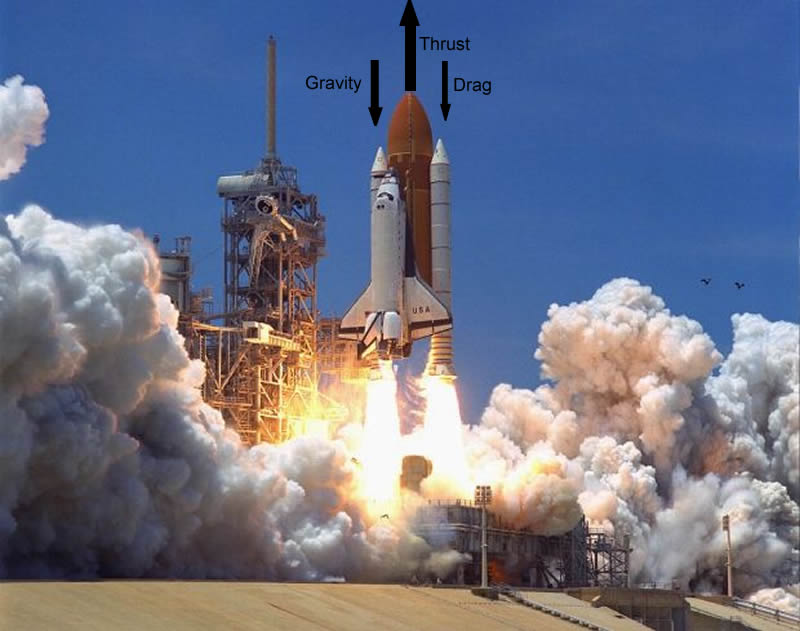Forces during flight
As the Shuttle accelerates skyward it is acted on by a number of forces. The force that drives the Shuttle skyward comes from its engines which burn fuel mixed with oxidisers (chemicals that provide oxygen during burning). This force is called thrust and is generated by hot gases that expand quickly through the nozzle of each engine. Violent chemical reactions inside the engines produce the gases and most importantly the tremendous heat that creates a temperature of 3,000 oC inside the combustion chamber (chamber where the fuel and oxidiser are burnt).
The engines have to work hard to overcome two other forces that are intent on keeping the Shuttle from reaching orbit. These two forces are gravity and drag. Gravity can impose a hefty toll on the heavy Shuttle as it lifts off the launch pad. As the Shuttle accelerates through the air the force of Drag becomes considerable as the winds pound the Shuttle. As the speed of the Shuttle increases so does the force of drag. The Orbiter's main engines are not working to maximum capacity in order to avoid damage to the Orbiter by the wind. They are throttled up only when the SRB's have being ejected. To see the effect of speed on drag, place your hand out the window of a moving vehicle. The force that pulls your hand back is not as great at 20 km/h as it is at 100 km/h. If you put your hand out the window of the Orbiter you will most likely loose it. Another example is when you run, knee deep, in water. The faster you go the more the water seems to pull you back.

What
happens to the force of drag acting on the Shuttle as it accelerates
skyward?
How can we reduce the effect of drag on the Shuttle? (Use the word aerodynamic)
As the Shuttle burns more and more fuel what force, acting on the Shuttle,
decreases? Explain why.
When does the Shuttle generate maximum thrust? Explain why maximum thrust
is needed in this particular instance.